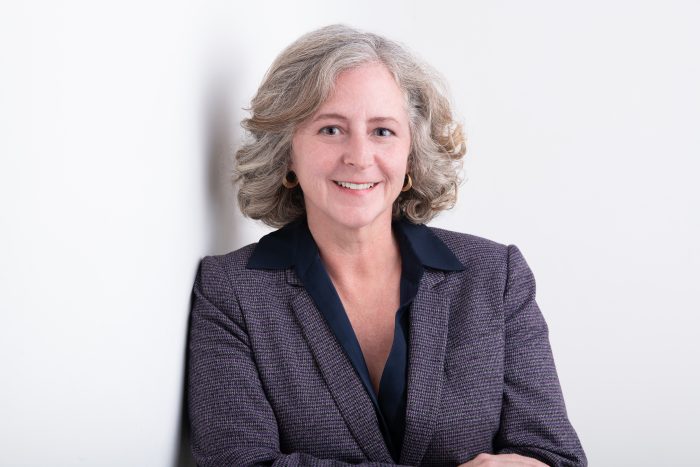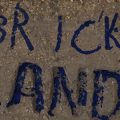Plans, Partnerships and Powerful Women: An Interview with Director Elizabeth Babcock
In this interview, Elizabeth Babcock discusses her goals for her first year as founding director of the Smithsonian American Women’s History Museum, plans for building successful partnerships, and the women who have inspired her and surprised her.

Dr. Elizabeth C. Babcock (Photo by Debora Cartright)
Other than immediate family, what woman has been particularly inspirational or influential in your life and/or related to the work you’re doing now?
It’s hard for me to name one or two women individually, but I’ve been thinking about the women scientists I’ve worked with during my twenty years in science museums. Working with these women was a real treat; I got to know scientists who dive to the depths of the ocean, explore coral reefs, and advance DNA technology to solve diseases.
They were often the only women scientists in that field or one of one of the few curators in a particular field across the country. They inspired me as I worked with them as an educator and museum professional to ensure the public knew of their discoveries and could celebrate their accomplishments. These women shared powerful stories with me about their journeys, about how they had to fight for access and recognition in their field, and how they balanced their family obligations and career dynamics. They sought to be an inspiration for their daughters and sons, and they have been a huge inspiration to me as well.
Our first exhibition, Becoming Visible: Bringing American Women’s History into Focus, highlighted women’s contributions and involvement in historical events that many people might find surprising. What are some of the most surprising things you have encountered in your career so far?
As I’ve travelled the world for my anthropological research and teaching, one of the things I have found most surprising and important is the way in which women serve as a linchpin in their community. Women are at the core of so many community functions, from day-to-day survival to catalyzing social movements.
One good example can be found in transnational migration. While I was working on my PhD in anthropology, I studied migration of people from Belize in Central America to Chicago. Women were often the first to migrate from their home communities. Over the decades, women from Belize moved to the big cities like New York, Chicago, and L. A., to work as domestic workers. They’d bring their family and their friends over, and communities grew as a result of those pioneering woman. These women served as the first link in chain migration.
These women also often served as the founder or president of mutual aid and migrant social clubs. They were and are leaders of the migrant communities they helped to establish. They are the matriarchs of the community and act as the glue that keeps the community together across generations. They ensure the welfare of the community through groups, clubs, and associations. They instill in the next generation the obligation to care for their kin and friends in that community. Women’s leadership is an important dynamic in migrant communities, and this points to the many, sometimes unnoticed, ways that women wield power in their communities.
Partnership, collaboration, and co-creation are a vital part of our mission. What are some of the most important lessons you’ve learned about building partnerships throughout your career that you will bring to this new role? How do you see the museum interacting and building partnerships with communities to elevate women’s history across the nation?
The best partnerships are ones in which you’re not parachuting in and parachuting out—especially when you’re talking about community involvement and engagement. It’s not productive, and it doesn’t build trust or meaningful collaboration. The best partnerships require a commitment to a shared project and a longer relationship. Defining what success will look like for everyone involved is critical. It’s also important to compromise. Building shared goals and a shared vision takes a lot of work and time. It is time intensive. It’s a commitment. Good partnerships also only come about when you listen carefully and hear deeply.
The Smithsonian American Women’s History Museum is a national museum. As we start to build partnerships and work with communities across the country, we need to approach communities with an asset mindset instead of a deficit model. That means going into a partnership understanding that every party in this partnership has something to contribute. Everyone brings an important and necessary resource to the table. Unless the space is made for everybody to take part, the outcome will not be powerful or relevant. Partnering to succeed is a long-term endeavor that requires commitment and investment in relationships. By listening and learning, we can create relevant programming that shares women’s contributions to American history across all parts of our country.
Since the museum will exist outside of a physical building for the next few years, how are you thinking about ways the museum can inspire conversation, connection, and change digitally?
I’m looking forward to getting the site approved for our new physical museum on the mall. While we work toward this key milestone, we are already building and advancing our work of discovering, sharing, and amplifying the contributions of women throughout American history.
We’re galvanizing teams of women and men across the country through the Women Making History Network to be our ambassadors for the new museum. We’re funding the Because of Her Story internships to do wonderful exploratory work around women’s history across the Smithsonian. And, we have already started to feature extraordinary women and the historical context in which they lived and worked through our digital exhibition Becoming Visible: Bringing American Women’s History into Focus.
We are already thinking about how our future digital exhibits can build off of Becoming Visible and connect with larger themes, such as the 250th anniversary of the United States in 2026. I don’t want to give too much away, but we are thinking about independence and what independence means to women specifically. We’ll be starting to explore this theme through the lens of financial independence, noting the upcoming anniversary of the 1974 passage of the Equal Credit Opportunity Act.
You mentioned independence as a theme for the 250th anniversary. This year marks the 50th anniversary of legislation that allowed women to open a credit card in their own name and without needing a male cosigner. What, if anything, does this anniversary mean to you?
This critical milestone has had a tremendous impact on the independence of millions of women. I spoke to my mom, who is in her 80s, about her experience. A major credit card company turned her down the first time she applied because she didn’t have any credit history. She wrote them right back, and said “I’m pretty sure you would approve the President of the United States’ wife even though she’s not employed outside the home, so how am I any different?” Within a week, she had that credit card in her hand. She said it meant a lot to her to see just her name on the card. For her, that meant she could make her own decisions.
My mom was excited to share this story with me. I think these kinds of conversations are so important, and part of our work at the museum is to create a space for different generations of women to talk together about what their experiences have been. It’s easy for those of us who are younger to take things for granted, but we are standing on the shoulders of the women who came before us and the work that they accomplished for us.
What is the most important piece of career advice you’ve gotten?
Keep your eye on the long-term goals you have for yourself and your organizations and celebrate incremental achievements. Our goal is to have an inclusive history of America. Day to day it is easy to lose sight of the systemic change you are working toward and to get caught up in this project or that initiative, which can feel all consuming. But, when you reflect on all the incremental advances that you make day to day, they add up and move you toward that long term goal. It’s important to celebrate those small wins.
This museum will open within the next decade, but the overall purpose of putting women at the center of American history is not going to be completed in 10 years. How will we build and maintain excitement for this mission in the long run? We need to celebrate the small wins and the incremental wins because that is how we will effect change.
The second piece of advice I’ve received is to remember that change takes time, and that change is accomplished by many actors, often during unexpected moments in history. Sometimes you can’t see how your actions are changing things at a systems level, but together, many people working toward as shared goal will create change. So be patient, celebrate small wins, and remember that change is incremental.
Meredith Herndon is the writer and editor for the Smithsonian American Women’s History Museum.
This post was originally published by the Smithsonian magazine blog, Smithsonian Voices. Copyright 2024 Smithsonian Institution. Reprinted with permission from Smithsonian Enterprises. All rights reserved. Reproduction in any medium is strictly prohibited without permission from Smithsonian Institution.
Posted: 22 August 2024
-
Categories:
Administrative News , American Women's History Museum , Feature Stories , History and Culture







